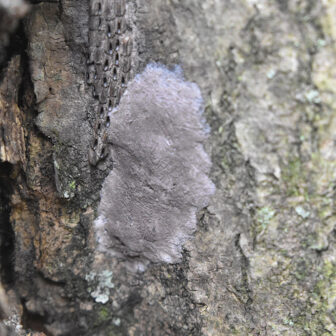One benefit of virtual, remote, online life has been access to workshops and classes that would otherwise be geographically prohibitive. For example, last winter I took a few permaculture classes offered by the University of Washington Botanic Gardens, taught, coincidentally, by an instructor who lives in India.
At $20 per session, it was also more affordable than many in-person classes. Bridging spatial boundaries opens up a lot of opportunities for garden design and practical knowledge.
I’ve also found social media, especially Instagram, to be a vital resource when looking for classes. I follow hashtags like #ecogardening, #sustainablegardening and #nativeplants. Some nurseries have online presentations about their plants and ecological issues. I’ve learned tips about growing fruit from Raintree Nursery, which posts growing guide videos on different species. Since I usually have to look up which fruit-bearing trees are self-pollinating versus cross-pollinated, I find their resources easy to access quickly.
I also regularly follow nonprofit gardens like the Morton Arboretum, Winterthur and the Garden Conservancy to find classes, resources and online talks. I discovered an organization called Quail Springs, a permaculture community that promotes natural building and design elements.
It’s better than doom-scrolling, trust me, and the content can be put to immediate use. I’d rather fall asleep thinking about what to plant in part-shade on a western slope along a swale than my vaccinated risk of getting COVID-19.
The New York Botanical Garden has the most comprehensive class offerings and programs outside of a college or university that I’ve come across and they attract innovative people working in the field to teach or lecture. Now that the classes are online or a mix of fieldwork and virtual class, it’s easier than ever to work toward a certification or take a one-time class in anything from horticulture to botanical drawing and landscape design.
While the Native Plant Center at Westchester Community College still isn’t open for visitors, its classes can be accessed virtually. Their fall program includes a one-day workshop, hosted with Teatown Lake Reservation, on creating meadows; it’s led by Larry Weaner, a founder of New Directions in American Landscapes. For now, it will be presented with attendees in masks in-person, but that can change. Online you can learn about native bees, bird habitats and ecological gardening.
Pretty, and pretty destructive
In New York City I recently encountered a forest threat that I’ve heard about for several years. I expect to see a lot of different things on subway stairs — rats, gum, discarded food wrappers and other things too gross to mention — but this shocker was a spotted lanternfly. Spoiler alert: Yes, I squished it.
In its adult state, the spotted lanternfly would light up a runway with its stylish mix of stripes, spots and colors. It’s hard to miss. Unlike other ecological pests that damage a single species, like the hemlock woolly adelgid or the emerald ash borer, the spotted lanternfly feeds on more than 70 species of plants, including hardwoods, fruit trees and crops. Its favored species are ailanthus (also known as tree of heaven), black walnut and grape vines.

The insect doesn’t travel far on its own and people are to blame for inadvertently dispersing it around the New Jersey, New York and Pennsylvania area. It shows up in landscaping material and firewood and even hitchhikes on cars as egg masses.
Destroying it before it hatches is a first line of defense. The eggs can be found on many different types of surfaces, not just trees. Submerging the mass in rubbing alcohol is the recommended method of destruction. Just scraping it off keeps the eggs intact to hatch.
Now is great time of year to spot the spotted lanternfly since it is so distinctive. So while you’re out hiking or walking in the yard, look around for the bright colors and waxy, brown egg masses. The state Department of Environmental Conservation is partnering with the Department of Agriculture and Markets for monitoring and to maintain zones of protection around high-value areas. Report sightings of the insect or egg masses by taking a photo and using the form that can be accessed at dec.ny.gov. Citizen participation in helping to stop these infestations is crucial.
